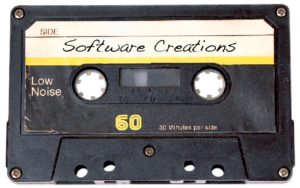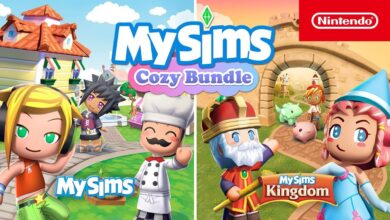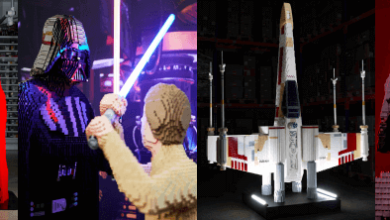Software Creations | Retro Gamer

Software Creations may be a relatively small company, but it contained some big talent and produced some fantastic games during its life time. Ste Ruffy and the Pickford brothers hail from the studio and it’s been involved in a variety of amazing games, from Bubble Bobble to Solstice and Plok. Founder Richard Kay reveals how it all started.
It might not be as well-known as Tim and Chris Stamper’s famous studio Rare, but besides producing some of the best arcade ports of the Eighties, Software Creations shares the honour of being one of the first European companies to produce games for a new breed of Japanese games consoles. It was a journey that took founder Richard Kay from shifting boxes at Ocean to employing over a hundred staff, making exclusive deals with Nintendo and Sony and meeting the creators of Space Invaders and Mario. And it is, to quote one of its most famous releases, a rather fantastic story.
“When I joined Ocean I wasn’t a programmer, I was packing in the warehouse,” recounts Richard. “But I was always interested in the old Atari stuff, it intrigued me how they wrote these things. Eventually I got myself a BBC Micro with the money that I earned at Ocean and taught myself to program assembly language. They were doing a game called Mr Wimpy on the Commodore 64, and at home I did all the graphics and sound. I walked in and showed it to [Ocean director] John Woods. And they took me on and continued paying me a box-packer salary but I was happy because I was writing games.” However, after completing a couple of titles on the Amstrad (Hunchback and Hyper Sports) Richard decided to move on to pastures new.
“I’d always had an interest in flying so I signed up to the Air Force,” he says. “I got accepted, but it turned out I had a slight eyesight problem that they hadn’t picked up initially. But I really enjoyed it, in fact when I was in there in November ‘85, people got to find out what I had done, and it was like being a pop star… I was signing autographs for Hyper Sports, which went on to go to number one at Christmas.” Richard continued to program, coding Mermaid Madness and an unreleased port of Repton for the C64, despite a call from the RAF asking him back if he could take an A-Level Physics course.
Richard Kay founded Software Creations in 1985. He currently lives in Jersey.
“The business really took off,” he confesses. “If you had worked at Ocean in those days it was like you’d been to Oxford University, it was a free pass. So many people were phoning… Firebird Software and loads of other companies contacted me, and being the businessman I didn’t want to turn this work down. I was working out of my bedroom at the time and I started on the Enterprise Allowance; it was about five pounds more than the dole but it gave you a bit more dignity. It was £40 a week but I didn’t need a lot in those days, and allowed me to run the company. And so I put an advert in the Manchester Evening News and Steve Ruddy responded.”
“Steve and I hit it off right away. He worked from home, and he did a boxing game called The Big KO. We worked very closely with each other for about 12 months. I hired Mike Ager and Andrew Threlfall, and we were the first four at Software Creations. I got an office on Oxford Road and it was above a computer shop directly opposite the BBC. We did a lot of games for Firebird – they were all for about three or four hundred pounds.”
Most of the early Firebird games were ports of budget releases like the Spectrum version of the questionably bonkers Mad Nurse and several Speccy to C64 conversions by Steve Ruddy. “The early projects for Firebird were enjoyable and they required me to use the C64 in innovative ways,” Steve recalls. “For example, Kinetik used colour bitmap mode, and Mystery Of The Nile used software sprites and a sprite multiplexer.”
Plok is one of Miyamoto’s favourite games according to the Pickfords.
He clearly has good taste.
“The company grew and we took on Mike Follin to do The Sentinel on the Spectrum,” continues Richard. “Everybody said it couldn’t be done, but he proved them wrong. Mike had heard about Steve because Steve was from Wigan and the Follins were from St Helens and knew each other. After we took on Mike, [his brothers] Tim and Geoff followed, and a chap called Mark Wilson who was a very talented artist. They already had their own company and we did some follow-ups to some of their games, like Agent X 2 on all the 8-bit formats.”
Tim Follin is rightly considered one of the finest musicians to work on the C64, as well as being remembered for his later work on games like Solstice and Equinox. As Steve remembers, Agent X 2 had a particularly funny jingle lifted from a current British TV ad. “I worked very closely with Tim as I wrote a few of music drivers he used on the C64, Amstrad, Speccy and NES,” he says. “Having written the drivers I was astonished by the sounds Tim got out of them, not to mention his composition and bonkers sense of humour – Shake N’ Vac was classic!”
While the budget-fare certainly helped pay the rent, it was with a brilliant arcade conversion that Software Creations finally hit the big time. “We were always interested in the arcades and then Firebird offered us Bubble Bobble,” says Richard. “That really did launch the company because they said you couldn’t do that on the 8-bit machines. I think the Commodore 64 version was the one that really did propel us forwards, and it won all sorts of awards [which] showed how good the team was.”
The Pickford brothers are still in the industry and currently work on iOS games.
We ask coder Steve Ruddy if he had any worries about converting such a massive arcade hit. “It wasn’t daunting originally, as it looked like a fairly straightforward platform and sprite game,” he replies. “However, once you start playing you noticed how the bubbles followed air flow patterns and how they all gathered in fixed places – lots of sprites on the same line meant a sprite multiplexer wasn’t suitable. Fortunately, having worked on the BBC Micro and Mystery Of The Nile, I wasn’t averse to using software sprites. We spent an awful long time playing the game; it’s a fantastic arcade game! We didn’t understand all of the secrets so we just implemented the game to mimic what we did notice. So how the pick-ups appear isn’t the same as the arcade on the C64, but it should be very similar to how the pickups appear after the machine is powered up.”
Conversions of more big arcade coin-op titles followed, including extremely well-received ports of Ghouls ‘N Ghosts and Bionic Commando, which also featured stunning Tim Follin soundtracks. “Attempting to get recognisable versions of the maps, sprites and gameplay on the Commodore 64 was very tricky for both,” admits Steve, who wrote both Commodore versions. “Bionic Commando was all about the bionic arm and how the player controlled it. I did spend a lot of time working on the mechanics of the bionic arm and it was worth it as I found even with just one fire-button I could use the arm when I needed without having to think about it. Also, with the cabinet available in the office we got really good at it, and used to have races to see how fast we could finish it! Ghouls ‘N Ghosts was more about the complexity of the maps and massive baddies with loads of frames of animation.”
But it was Bubble Bobble that really made a splash, even across the pond. “Once we had done that conversion we got a lot of calls from America,” says Richard. “Taito themselves asked us to do a lot of games for them like Sky Shark [aka Flying Shark] and Puzznic. Taito actually brought Tomohiro Nishikado, the creator of Space Invaders over, and for us it was like meeting the father of videogames. We literally all lined up and bowed. That was definitely a highlight of that period. And we became well-known for doing coin-op conversions and took a lot of stuff on that other people wouldn’t do. So we were starting to grow and the company ended up with about 105 staff, and we had an office in Seattle which was exciting, and that was really to service Nintendo.”
Ste Ruddy coded the amazing conversions of Bionic Commando and Bubble Bobble for the Commodore 64.
“I’d been chasing Nintendo for a long time,” Richard reveals. “It was Colin Fuidge, one of the producers at Firebird, that first introduced me to the NES. Colin opened this draw and out popped this original Famicom, and he said ‘this is what you want to get into.’ I remembered the old days of the Atari cartridge systems and wanted to get back to the console days, so I got in touch with the Chamber of Commerce in Manchester and found Nintendo’s number. And for about three months I continually phoned Howard Lincoln [the chairman of Nintendo of America at the time]. Eventually he picked up the phone and I said ‘My name is Richard Kay from Software Creations, we’ve got a small team in Manchester, and I’d be very interested in working on your machine.’ He said ‘If you can get the information on the machine and write a demo, we will give you the information…’ In other words ‘get stuffed!’”
“Then I discovered that Mike Webb was reverse engineering the NES which is where Mike came into the business. I’d worked with Mike at Ocean and he was a genius. Not only could he program, he was also an electronics engineer – he used to work for a company that designed high-voltage switchgear for power stations. So Mike had this unique combination of electronics skills and software skills, and he was brilliant at both. About three months after my first call to Nintendo I phoned Howard again. Mike had written the initial code for what ultimately ended up being Solstice. I spoke to Nintendo again and said ‘Look we’ve got a demo’ and there was this deadly silence on the end of the phone… And I said ‘I’ll be in Seattle next week can I show you the game?’ I didn’t even have a passport! Howard said ‘Sure if you’re here next week pop by on Thursday.’ So we booked a cheap flight and flew to Seattle. Things were about to get very exciting for Software Creations…
Notable Software Creations Games













